
Humidity control in homes is not just a building durability issue, it’s also a significant health issue, and not just because of mold. And mechanical dehumidification is no longer just an issue for hot/humid climate zones. As the earth warms and our climate changes, the length of the hot and humid season is growing in areas where builders have historically ignored dehumidification. Moreover, in low-load homes and swing seasons, where the air conditioner doesn’t need to run constantly, we need to control humidity separate from the air conditioner’s latent load capacity.
This is the gist of the latest BS* + Beer Show where Kristof Irwin, principal of Positive Energy, and Nikki Krueger, the industry manager for Therma-Stor’s residential moisture control products, take us deep into moisture issues and their solutions. After an insightful presentation from Kristof and Nikki, the hosts follow up with some clarifying questions, and we take questions from the live attendees as well. Enjoy the show!
The next show is Thursday, June 25, from 6 to 7:30 pm: Everything you ever wanted to know about advanced framing. Our panelists are long-time Fine Homebuilding and GBA author, speaker, educator, and RI builder Mike Guertin; and Port Orchard, Washington framer Tim Uhler. Tim is a frequent contributor to the Journal of Light Construction and shares his knowledge on Instagram and YouTube. Use this link to register for The BS* + Beer Show.
Brian Pontolilo is a former editor at Fine Homebuilding magazine and Green Building Advisor.
Weekly Newsletter
Get building science and energy efficiency advice, plus special offers, in your inbox.






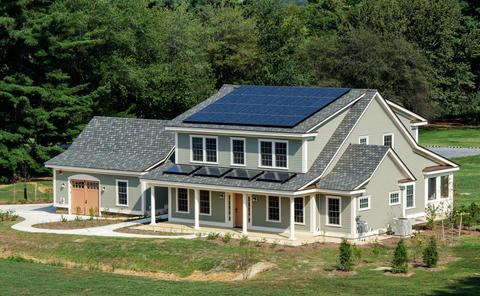

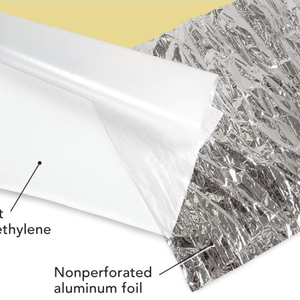

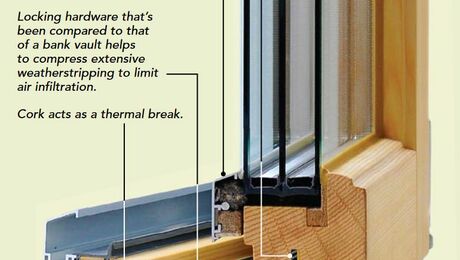

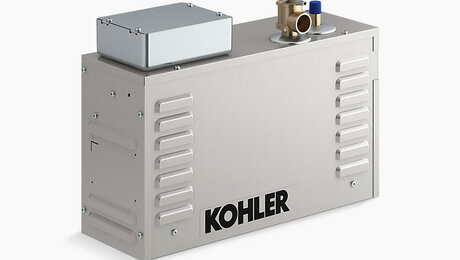
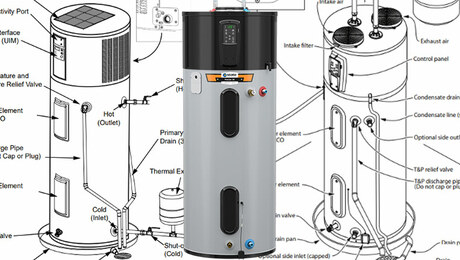
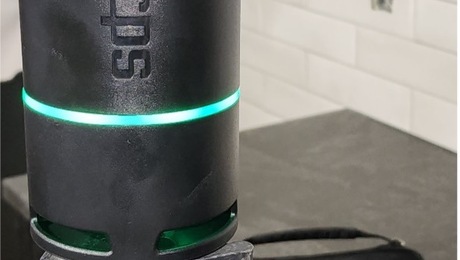
14 Comments
I'd like to see some math to justify the comment about leaving your bath fan running for at least 30 min. after having a shower. Seems to me that the resulting air infiltration would bring a lot of humidity into the house during hot humid weather. A 50 CFM bath fan should do a complete air change of most bathrooms in about 10 minutes.
Also, while there was mention of the importance of operating exhaust fans to get rid of moisture at the source (range hood, bathroom) which makes sense for existing construction, there was not much mentioned about the importance of proper ventilation design in new construction to eliminate moisture. Exhausting moisture at the source is effectively dehumidification of the structure (or more accurately perhaps, avoiding humidification).
Expanding on the difference between ERVs and HRVs and their effect on indoor humidity levels would have been nice. It was mentioned, but only briefly and in a way that some may not have fully understood. In a nutshell; for a given amount of ventilation in hot humid weather, ERVs introduce less moisture into a dwelling than HRVs do if the dwelling is air conditioned. This is possible because the indoor air being exhausted has a lower dewpoint than the outdoor air being drawn in, and the ERV core will pass some of the incoming moisture to the outgoing air.
Great show overall! I'm really liking this new BS+B series!
The fractional difference of RH between inside and outside will decline exponentially as the fan runs. For a room volume that is tenfold greater than the fan speed per minute (0.1 exchanges per minute), running the fan for ten minutes will result in the inside RH being about 0.63 that of the outside [1-exp(-0.1/min x 10 min)]. Run for 30 min gives about 0.95 . You are correct of course that you will only approach the RH of the outside air.
Good points, Fred. I think your approach assumes, however, that the resulting infiltration is entering only into the bathroom where the fan is running? In a scenario where the infiltration is distributed throughout the air conditioned dwelling, the overall RH would be rising as the RH in the bathroom drops.
WRT the ventilation flow and room volume, I would think in a bathroom vent scenario the effectiveness of the fan would be increased beyond the calculations since the warm humid air being exhausted gathers near the ceiling, and there would be relatively little mixing from air leaking into the room from below the door?
Lance, you are right my assumptions include perfect mixing of the indoor bath room air and only the bath fan running, and infiltration from outside air. also that the fan starts after accumulation of moisture. I posted it as the simplest 1st order approximation to perhaps give some quantitative reasoning behind the 30 min recommended run time. As you note, the real world gets more complicated quickly!
Many thanks for your insight, Fred!
Calculating an optimal (from an energy use standpoint) fan run-time properly is complex and requires knowledge of fan power, outdoor dew point (latent load), outdoor temperature (sensible load), etc.
With a zero watt fan (eg a window), 75F and 50% RH outside, you can run it continuously with no energy loss! At the other extreme, in some conditions (like right now in Miami), it is most energy efficient to leave the bathroom door open post shower and not use the exhaust fan at all - zero minutes is best.
Rough summer/AC approximation - run the fan till the bathroom dew point is the same as outside. After that, rely on the open door (which is quite effective). Might save 5¢ per shower (or allow a 2 min longer shower).
Expect low amounts of continuous ventilation (eg, ERV) and a closed door to leave the bathroom humid for much longer than a high CFM dedicated exhaust fan.
Jon, the fan power is implicit in the given fan speed. A zero watt fan of course results in zero air exchange. The key variable is the ratio of room volume to volumetric fan speed , or its inverse. I challenge you to derive the more complete governing equations. I would be surprised if their solution differs from the 1st order approximation by more than 10% under typical environmental conditions.
A simple empirical solution may be had by leaving something with a distinct oder in the bathroom, then removing it quickly and leaving the room with fan running. Come back in 10 minutes. Still smell it? come back in 10 more minutes, etc. I leave it to the reader to decide on the appropriate odiferous object ;)
I like your rough approximation of comparing dew points. Of course, not many of us have multiple dew point probes and a dashboard displaying them for comparison. (As much as I having my Ambient Weather WS-3000 set up to display dew points, I don't expect it will become widely popular to use it that way soon.) But I could see having an automatic fan that would be controlled based on comparing indoor and outdoor probes, doing as you say when it's warm out and using a simple RH limit in the winter.
Note that wet shower surfaces continue evaporating into the room air for a while, which is part of the need for some degree of continued ventilation.
Great show! I've been studying this topic for a while, and learned even more here. I know one architect that insists that no house should need a separate dehumidifier. She believes that AC should adequately control humidity during the summer. and if the interior humidity gets above 60%, then there must be a water leak in the envelope.
I've seen a huge change in the climate where I live in the mountains of Virginia. Twenty years ago, our summer temps were significantly cooler and the dew points rarely got out of the 50's. Now, we frequently have dew points between 65-70. It is MUCH more humid now than it used to be. We still rarely get temps into the 90's, but without some kind of humidity control, papers wilt and sheets feel damp at night.
Debra, I am building in a similar climate, in the mountains of West Virginia, and am pondering how to deal with the issue of high humidity without much need for cooling. How have you dealt with it?
I use one 70-pint dehumidifier on the main floor of our 1,300 sq ft rental townhouse. It's near where fresh air comes in (which brings in moisture), and also near the thermostat for our heat pump. If the dehumidifier makes the room too warm, the AC kicks on for a bit. This has worked out pretty well for us.
We basically only need the dehumidifier from about June - September (or a little later, depending). If we didn't have any AC, then using an indoor dehumidifier would be problematic because of the heat it generates.
It's nice to see more recognition that most AC equipment has moved towards less moisture removal while energy efficient homes require more (as a percentage of sensible load). This makes a dehumidifier (and distribution) even more necessary.
Equipment that doesn't make this mistake are Daikin Quaternity and Carrier Infinity.
I didn't get to join in live on this event this week, but what a great episode. I have such a strange condition at my house (which clearly I need to reach out to Nikki, Kristof or Allison about). In the winter with an ACH of 8.5 our air is under 20% RH and it was terrible. But I moved my office to the walk out basement during covid 19 and discovered that the shoulder seasons and especially right now, the humidity levels are out of control. As I watched this episode I went and collected the humidistat which says 78% I have the door open because it's cold in the basement, but I live on the coast and the humidity levels are high outside. I always tell my clients not to "ventilate" their basements in the summer in Maine - and I'm doing all those things as well. The paper coming out of my printer feels wet. Lol - great episode. Can't wait to learn more. This is a short season issue in Maine, but one I think we will continue to have difficulty with as it gets warmer and more humid here.
A fascinating show, and one that made me question some of what I've read on this site, a lot of which is geared toward cold climates. I'm in hot-humid Zone 2A, New Orleans.
I bought a Panasonic Whisper fan just to vent the shower, but I was recently considering going 24/7 exhaust-only by adding the appropriate module. From this BS&Beer discussion, that's clearly a bad idea in my climate. My indoor humidity is usually around 60%, with some drops into the low 50's and regular excursions to the low 70's. So it's more humid than it ought to be, not helped by my spray-foaming the roofline and under the floor, making the house tighter and requiring less work from my a/c, and therefore less dehumidification.
Nikki's chart shows we're in "partial load" conditions over 4000 hours per year, almost half the time, so we seem to be in a no-question-that-you-need-a-dehumidifier zone. I was considering getting one down the road if needed, but they’re saying it’s needed, so I might as well get it over with. Local HVAC folks are old-school and just say to run the a/c to dehumidify. I'd like a simple solution because I'll probably do it myself.
It's a 2-story house with a heat pump for each level, about 2100 square feet total. Attic is under 600 square feet, with a spray-foamed low gable roof and one a/c supply vent. The upstairs heat pump is only two years old, SEER 16, and I run higher humidity upstairs than downstairs, and even higher in the conditioned attic. If I could hide a dehumidifier in the attic, that'd be nice to have it out of the way, and it could drain into a plumbing stack or a/c drain line. My house is not especially tight, probably average in the walls, but with fairly tight floor and roofline thanks to the foam.
Suggestions? Can I improve conditions with a simple self-contained Santa Fe unit for the attic, where humidity is highest? Or should the "dehu" be in the living space if it's not integrated into the a/c system? Or do I really need to integrate into the a/c system if my present air changes are mostly passive or exhaust-driven? Enquiring minds want to know! Thanks!!
Log in or create an account to post a comment.
Sign up Log in